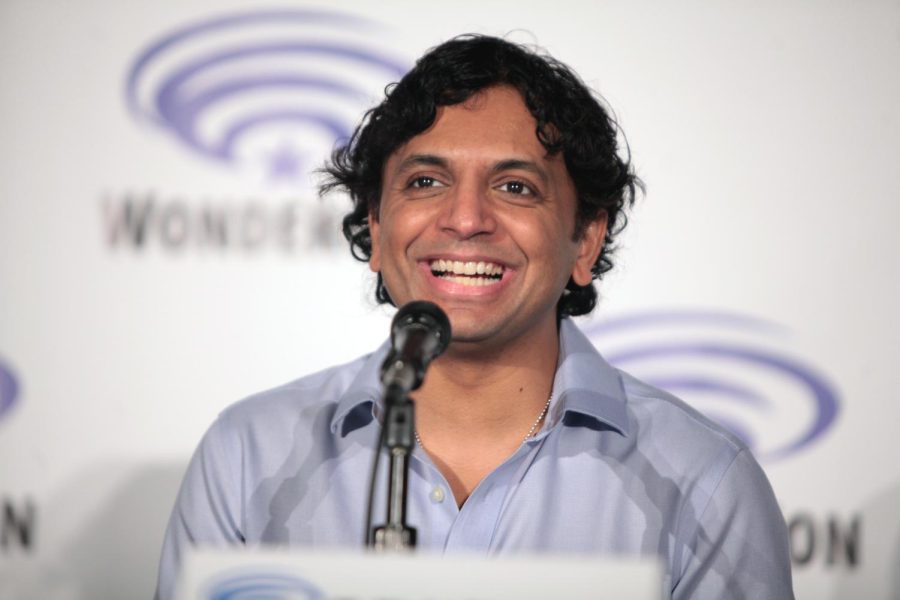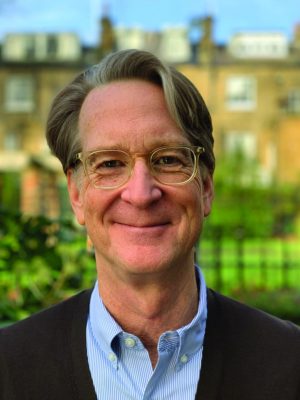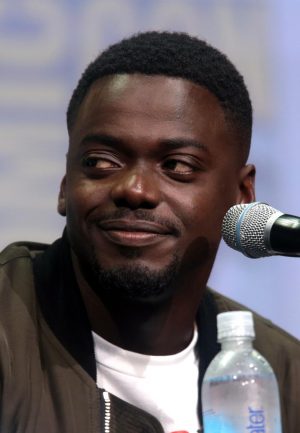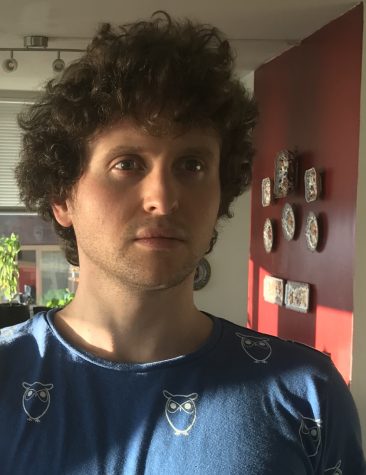Shyamalan’s ‘Old’ Doesn’t Need a Twist
The fear of time itself: Reevaluating a dismissed icon
GAGE SKIDMORE VIA FLICKR
M. Night Shyamalan created “Old” after his long, successful career in filmmaking, and critics have mixed reviews about the film.
October 3, 2021
Filmmaker M. Night Shyamalan hasn’t gotten old yet, but he’s lived long enough to be frightened by time. He’s seen his kids grow up and his father fall into dementia. After reading a graphic novel called “The Sandcastle,” Shyamalan decided to make a film that would catapult the viewer into a disorienting timescape.
“It’s okay to be right here, right now. Don’t think about what you lost, and don’t think about what’s gonna happen,” Shyamalan said to Vanity Fair, while also calling his new film “Old” “the most difficult movie” he’s ever had to shoot. The challenge was to make an expansive beach and ocean feel claustrophobic. His choice of location — a single beach and hotel in the Dominican Republic — is a daring constraint to put around any feature-length film.
Released in early February 2021, the new film shows bodies aging faster than their minds can comprehend. An idyllic beach swiftly becomes something more sinister. Time begins to accelerate out of control. We don’t know what about the beach is aging its unlucky inhabitants, but it’s clear that we’re far from paradise. The most striking scene in the trailer depicts a very young girl watching in horror as her stomach rapidly swells with the telltale signs of pregnancy over a matter of seconds.
Not everyone was enthused. But it’s not Shyamalan’s first rodeo with critics. “We know and begrudge Shyamalan and see his movies as simplistic because they have these twists,” said Ashar Foley, a professor who teaches film classes at Fordham College at Lincoln Center (FCLC). “Sometimes these twists make his films less rewatchable. The sense that people have is ‘Oh God, that guy is making another movie, he’s such a hack,’” but, according to Foley, Shyamalan’s creative process is no less valid than that of any other director.
We are much less likely to roll our eyes at figures like Wes Anderson, writer and director of “Rushmore” and “The Royal Tenenbaums,” despite his recognizable aesthetic. For Quentin Tarantino, writer and director of the “Kill Bill” franchise, we quickly recognize his brand of over-the-top violence, racial slurs and preoccupation with feet. But neither director is condemned the same as Shyamalan. We give a pass to every director’s unique process but we treat Shyamalan differently, accusing him of being gimmicky and cheap. The rationale is hard to pin down.
As Foley pointed out, many of Shyamalan’s films are very literal. “People roll their eyes at him a lot, but maybe it’s time we grow up and stop doing that, and start thinking about what different experiences cinema affords us, and what movies can be,” she said.
Maybe “Old” reflects a desire to break out of old tendencies.
Shyamalan explained in an interview that his process for writing the signature “twist” is different in each project. Sometimes he starts with the twist and brings the narrative to meet it. Sometimes the resolution comes to him first. And sometimes the twist and the ending only occur to him long after he has begun writing. In the case of “Old,” the twist seems incidental to the focus of the narrative, rather than subsuming the narrative itself.
In a separate interview, Shyamalan expressed his desire to “make feature-length twilight zones,” where a single moment or a single ending makes the viewer reevaluate what they thought they were watching the entire time. He says his movies have become known almost exclusively for their endings, a reality he isn’t particularly pleased with. Maybe “Old” reflects a desire to break out of old tendencies.
At this time, “Old” sits at a mediocre 50% rating from critics on Rotten Tomatoes, with a similarly harsh 53% from audiences. Reading some of these reviews, a slow pace is the most referenced critique. “At times I felt like I was getting older in the theater,” wrote theatergoer JC.
“Cool ideas that don’t age well,” added Bob Grimm from the Tucson Weekly.
By pushing away from the strictly literal, Shyamalan explores depths of audience interpretation he was more reluctant to gamble on in his early career.
Although no one will consider “Old” to be his finest achievement, Shyamalan is still a force to be reckoned with. The film flirts with metaphor in a way his other work has not.
In “The Varieties of Religious Experience,” William James wrote that “we learn most about a thing when we view it under a microscope, as it were, or in its most exaggerated form.”
With “Old,” the major antagonist is not the physical enemy of “Signs,” nor the concocted one of “The Village,” but an exaggerated existential threat. It’s time under a microscope and on steroids. At best, the extreme compression of time affords the viewer a window with which to better contemplate the fleeting moments of their own life. By pushing away from the strictly literal, Shyamalan explores depths of audience interpretation he was more reluctant to gamble on in his early career. But, at worst, it can feel pretentious.
One may be left with the impression of a director trying to be more profound than his filmic arsenal can support. Elena Morales, FCLC ’23, said the film is “only worth seeing if you have nothing else to do, you wouldn’t miss out by not seeing it.” Comparing the film to the graphic novel, she said that the movie unintentionally “removed a lot of the philosophical themes from the original story.”
Nonetheless, those who appreciate Shyamalan’s enduring visions might see “Old” as an interesting way station on Shyamalan’s path to the next great film. We may not always be captivated watching the film’s characters grow older, but seeing Shyamalan develop is well worth the price of admission.














